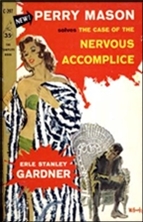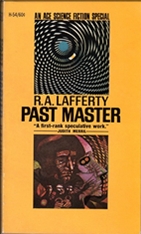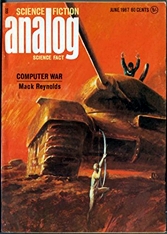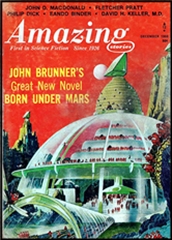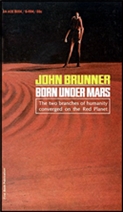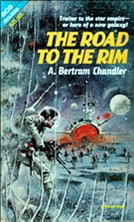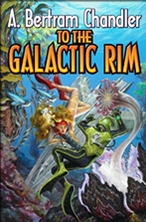ELLERY QUEEN’S MYSTERY MAGAZINE – June 1967. Overall rating: ***
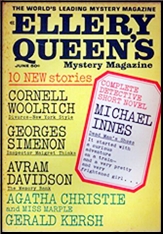
CORNELL WOOLRICH “Divorce – New York Style.†Serial, part 1 of 2. This story will be reported on in my review of the July 1967 issue. [Note: This installment is only ten pages long.]
GEORGES SIMENON “Inspector Maigret Thinks.†[First published in English in Argosy (UK) December 1961, as “Dead Man’s Barge.â€] Two hangings on a barge in the Seine require Maigret’s attention. (3)
GERALD KERSH “A Game Played in the Twilight.†[Reprinted from The Saturday Evening Post, October 10 1959, as “Duel in the Dusk.â€] A young Wild Bill Hickok learns how a near-sighted woman avenged the murder of her husband. (2)
EDWARD D. HOCH “The Theft from the Onyx Pool.†Nick Velvet is hired to steal 10,000 gallons of water from a swimming pool. (4) [Note: I reviewed this story separately on this blog here.]
AVRAM DAVIDSON “The Memory Bank.†Attempts to retire an aged clerk fail because of the old man’s memory. (4)
AGATHA CHRISTIE “Ask and You Shall Receive.†[Reprinted from The Royal Magazine, May 1928, as “The Thumb Mark of Saint Peter.†It was later collected in The Tuesday Club Murders.] Miss Marple’s niece is suspected of murdering her husband, and pilocarpine is mistaken for a heap of fish. (3)
MIRIAM SHARMAN “Battle of Wits.†A headmaster is confronted by the father of a student who was expelled. Good moments, but too confused. (3)
COLIN WATSON “Return to Base.†An American returns to an abandoned British air base where a girl had disappeared, Moody, languorous and uninteresting. (2)
ROBERT LADNER, JR. “Choice of Evils.†[Appears in EQMM‘s Department of First Stories- and was the author’s only published work of crime fiction.] The owner of a gas station slowly going bankrupt finds robbery the solution to his problems. (4)
JAMES HOLDING “The Photographer and the Columnist.†Manuel Andradas works out a plan to get all the money due him for working for the Big Ones. [Note: Under the guise of a photographer, Andradas is a professional assassin.] (3)
NEIL MacNEISH “Lament for a Scholar.†[Author’s real name is Norma Schier; an anagram of Michael Innes is used as the stated author.] Pastiche of Sir John Appleby. (0)
MICHAEL INNES “Dead Man’s Shoes.†Novelette. [Reprinted from Lilliput, August/September 1953; later included as the title story of a US hardcover collection.] A young real estate agent has a strange adventure traveling back to London, involving him with a murdered scientist wearing different colored shows. Sir John Appleby is the detective in this story of international espionage. Too clever a plot on the part of a murderer leads to his downfall. (3)
— April 1968.
